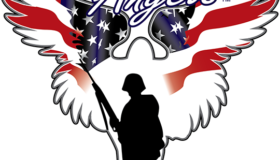From Wooden Ships to Warships: Honoring 250 Years of Naval Bravery
October 7, 2025
For 250 years, the United States Navy has stood as a shield upon the seas—protecting freedom, projecting power, and carrying the Stars and Stripes into every ocean on earth. Honoring the U.S. Navy’s 250th Anniversary, we reflect on its journey from humble wooden frigates battling for independence to the steel giants and stealth submarines of today—a story of resilience, sacrifice, and unshakable courage.
The Birth of a Naval Legacy
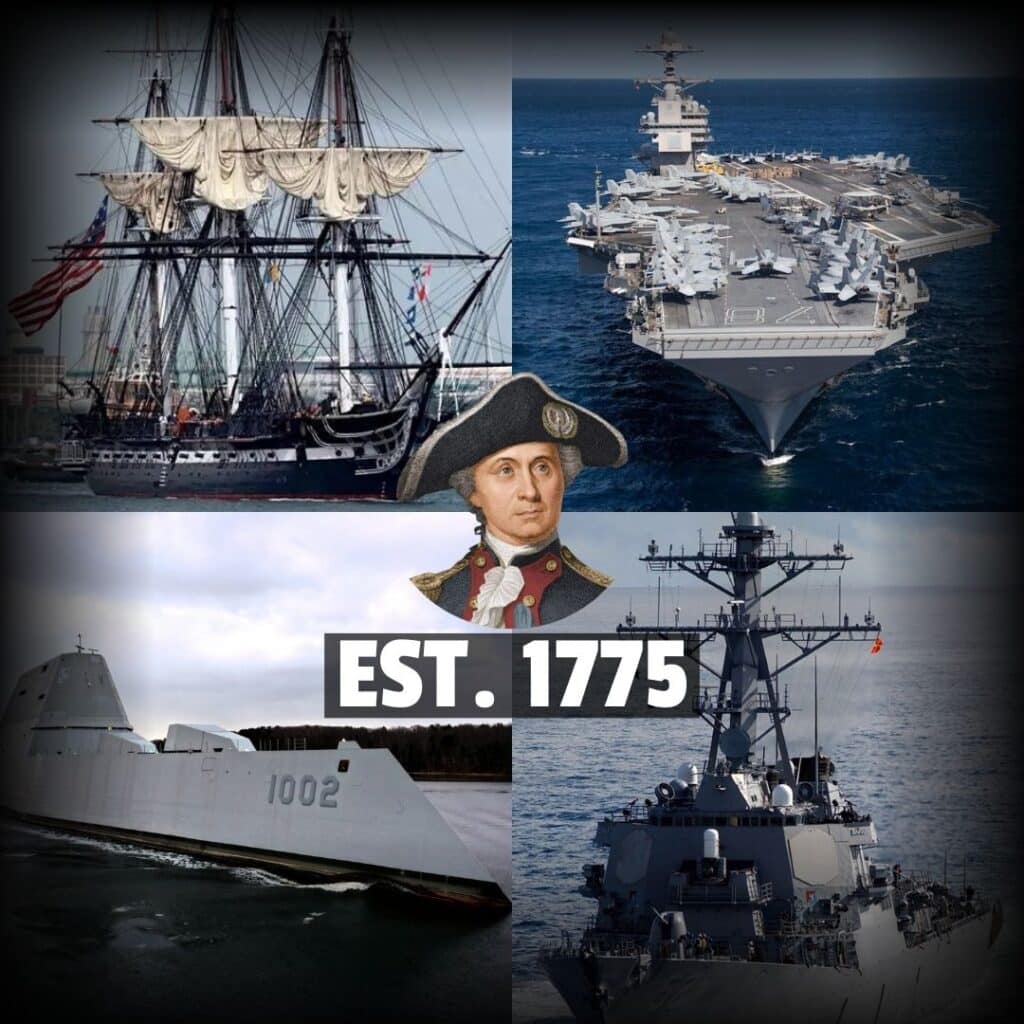
In October of 1775, the Continental Congress recognized a truth that would define our nation forever: freedom cannot endure without strength at sea. With little more than determination and a handful of repurposed merchant ships armed for combat, the Continental Navy set sail against the world’s most dominant maritime force—the British Royal Navy. These were not seasoned warships, and many of the sailors were farmers, fishermen, and tradesmen who answered the call to liberty.
Yet what they lacked in firepower, they carried in resolve. They raided supply lines, captured enemy vessels, and disrupted British operations in bold, unconventional strikes. Figures like John Paul Jones, the “Father of the American Navy,” became legends—not for commanding the largest ships, but for refusing to surrender even when facing certain defeat. Though outnumbered and outgunned, these early sailors lit the torch of liberty across the waves, forging the spirit of a Navy that would one day command the oceans.
From Frigates to Carriers: A Century of Growth
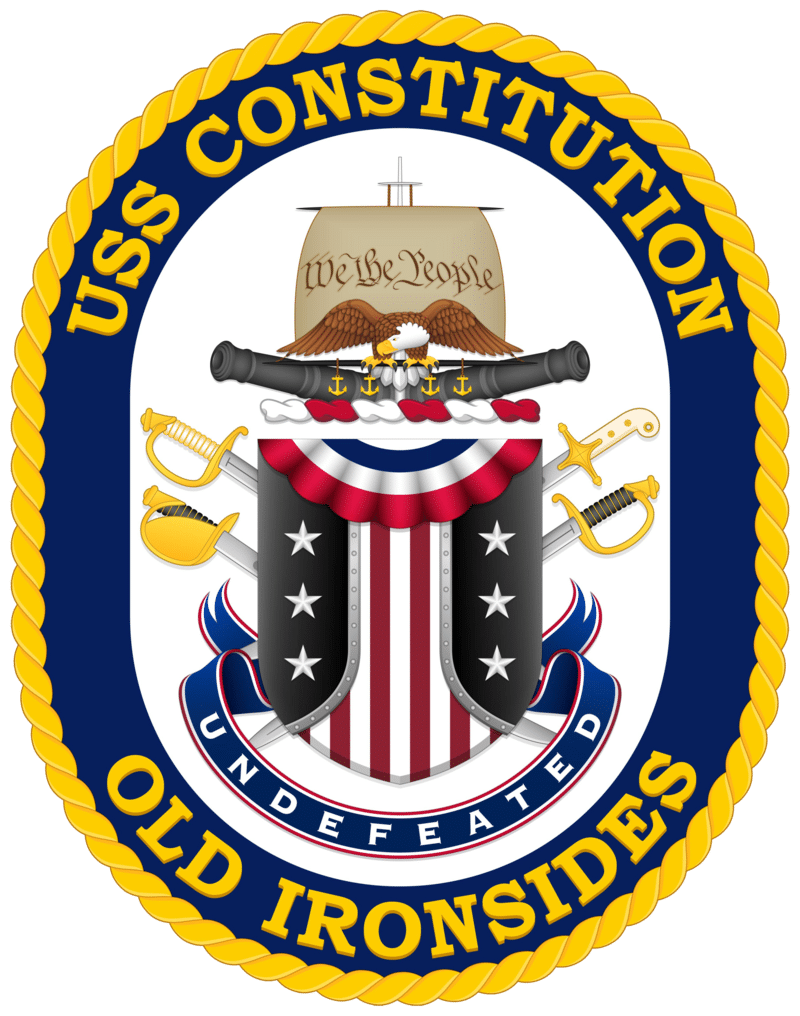
The early 19th century saw legendary frigates like the USS Constitution, nicknamed “Old Ironsides,” prove America’s resolve during the War of 1812. With cannon fire thundering across the Atlantic and wooden hulls absorbing enemy shots as if impervious, these ships became symbols of a young nation’s determination to defend its sovereignty. Battles like those against HMS Guerriere and HMS Java showcased not only superior seamanship but also the courage and ingenuity of American sailors facing well-established naval powers.
As the nation grew, so too did its Navy—transforming from wooden decks and simple cannon fire into ironclad ships capable of withstanding far heavier firepower. The post-Civil War era introduced armored cruisers, more powerful artillery, and innovations that modernized naval strategy. By the turn of the 20th century, America was no longer simply a nation protecting its own coastlines; it had emerged as a world power capable of projecting strength across distant oceans, preparing to meet global challenges and asserting its presence on the international stage.
Early 20th Century: Forging a Global Presence
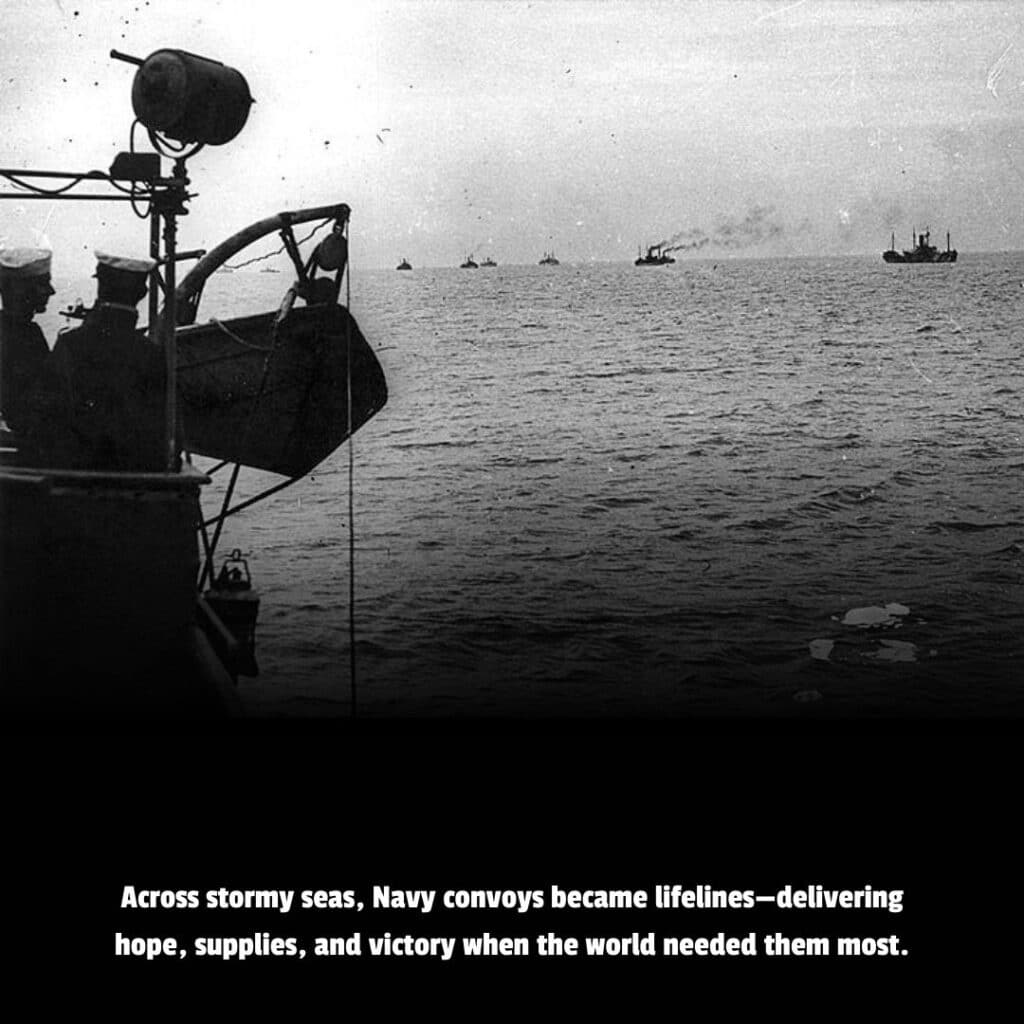
As the 20th century dawned, the U.S. Navy began asserting itself on the world stage. Beyond the headlines of great powers, sailors faced countless lesser-known conflicts and missions that tested their courage and resolve—from patrolling the Caribbean during the Banana Wars to securing American interests during the Boxer Rebellion and World War I convoy operations. These experiences forged a Navy capable of projecting power far beyond American shores, training generations of sailors in the harsh realities of the sea and preparing them for the challenges of the global conflicts yet to come.
Pearl Harbor: A Day of Tragedy and Triumph
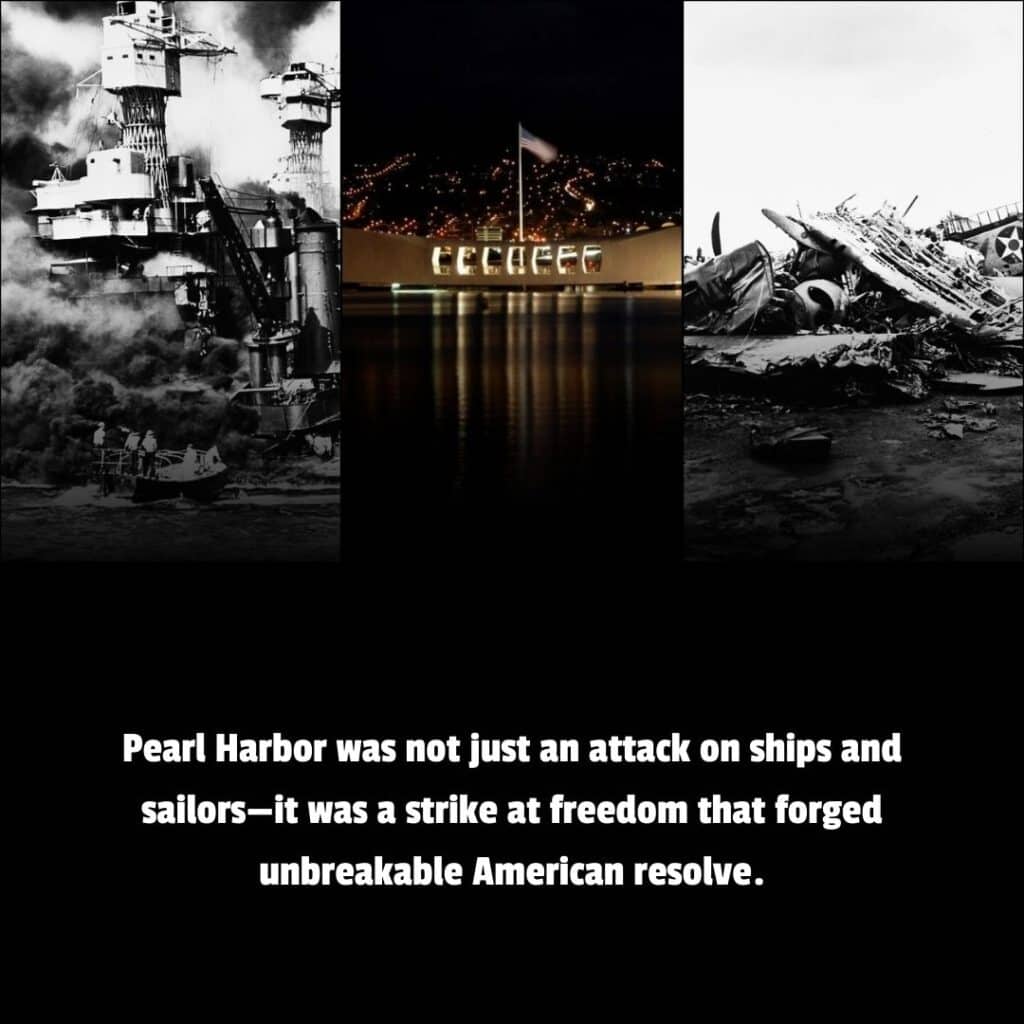
On December 7, 1941, the Navy endured one of its darkest hours. The surprise attack on Pearl Harbor claimed the lives of more than 2,400 Americans and devastated much of the Pacific Fleet. Yet from the wreckage rose a renewed determination. The sailors and Marines who fought that day inspired a nation to rise together, and the Navy’s response would change the course of history.
Just months later, the Navy played a pivotal role in the daring Doolittle Raiders mission. Using the aircraft carrier USS Hornet to launch 16 B-25 bombers against Tokyo, the Navy enabled the first American air strike on Japanese soil—a bold operation that lifted national morale and demonstrated that the U.S. could strike back. From the Battle of Midway to island-hopping campaigns across the Pacific, the U.S. Navy helped secure victory in World War II and forever cemented its role as the defender of freedom.
Heroes of the Deep Blue
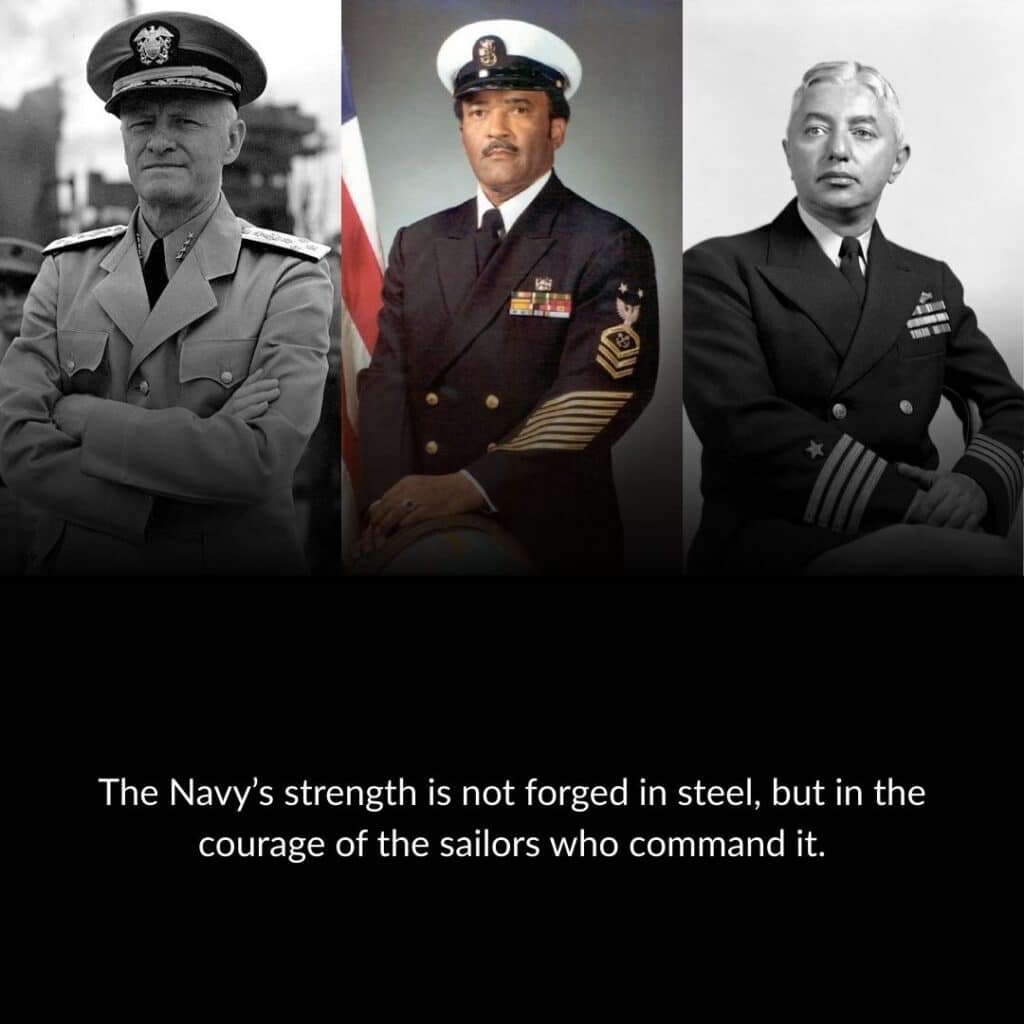
The Navy’s story is not just about ships—it’s about the men and women who serve. Leaders like Admiral Chester W. Nimitz, who guided the fleet through World War II, and Admiral Hyman G. Rickover, father of the nuclear Navy, pushed the boundaries of innovation and courage. And then there’s Master Chief Carl Brashear, the first African American U.S. Navy Master Diver, who overcame incredible obstacles, including losing a leg in a tragic accident, to continue serving with unwavering determination. Their legacies live on in today’s sailors, who continue to uphold the Navy’s core values of honor, courage, and commitment.
The Rise of Special Operations: Navy SEALS
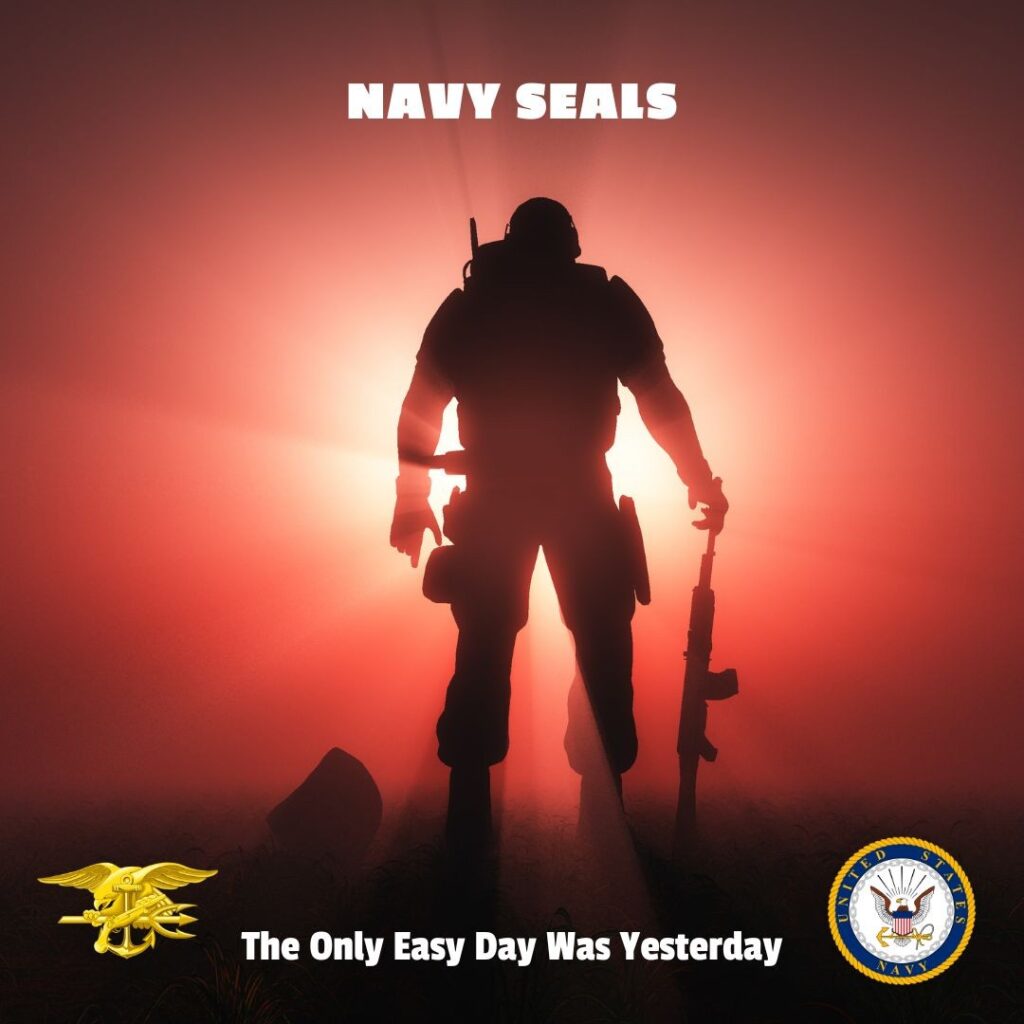
Among the Navy’s most elite warriors are the Navy SEALs—born in 1962 from a need for unconventional warfare at sea, in the air, and on land. From storming beaches in Vietnam to capturing Osama bin Laden in Pakistan, the SEALs embody the Navy’s fearless spirit. Their training is grueling, designed to push both body and mind beyond human limits, and only a few complete the program. Every mission demands precision, courage, and split-second decisions where the smallest mistake can cost lives. Beyond headline-grabbing operations, SEALs have carried out covert reconnaissance missions in some of the world’s most dangerous regions. They have also conducted hostage rescues and critical humanitarian missions, often under extreme risk. Their daring actions and quiet professionalism represent the sharp edge of America’s naval power.
True bravery often operates in the shadows—unseen, yet vital to protecting national security.
Unsung Heroes and Lesser-Known Battles
The Navy’s history is filled with stories few know but all should honor:
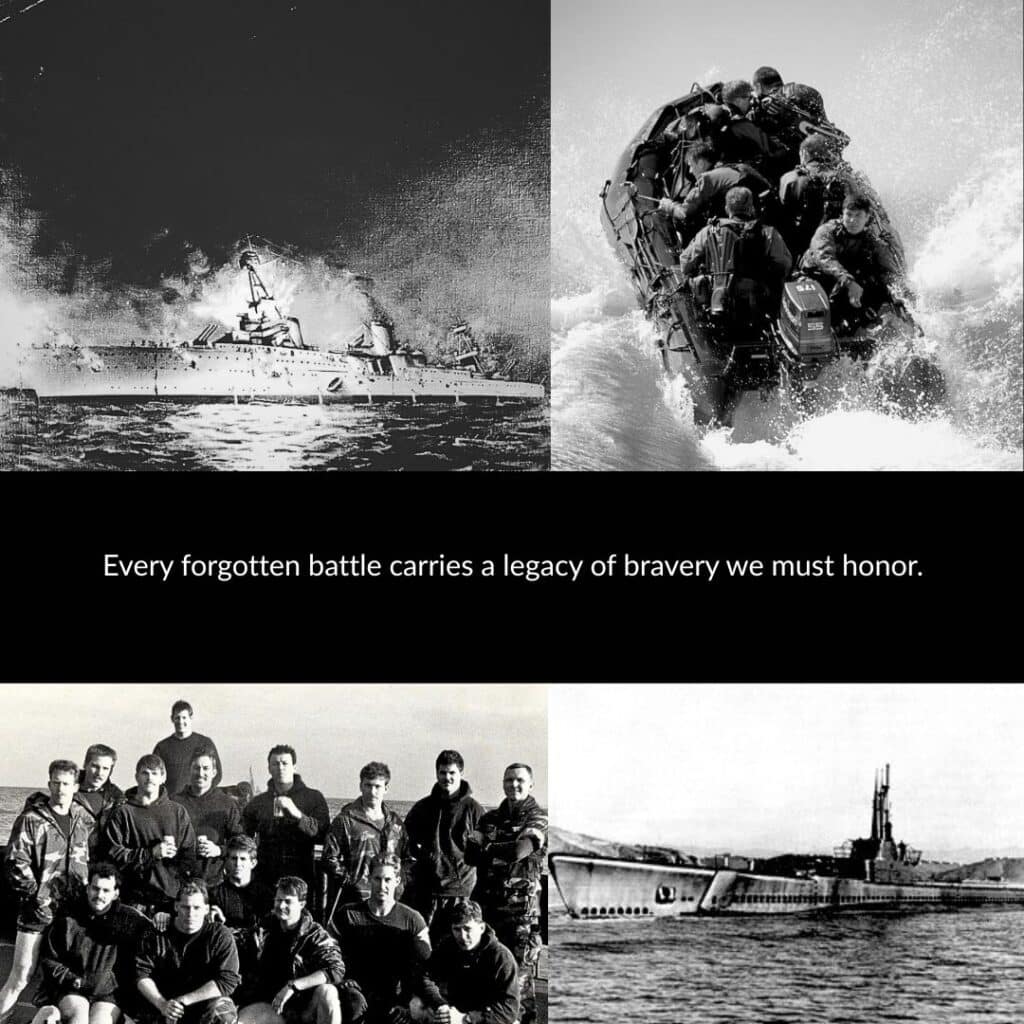
- USS Houston (CA-30), “The Galloping Ghost of the Java Sea”. Fought valiantly in the Battle of Sunda Strait despite overwhelming odds, paying the ultimate price for courage.
- USS Indianapolis (CA-35). Delivered critical atomic bomb components in 1945, only to be sunk by a Japanese submarine, leaving survivors adrift in the Pacific—a story of sacrifice that still chills to this day.
- USS Tang (SS-306). One of World War II’s most successful submarines, sank 33 enemy ships before a malfunctioning torpedo ended her mission, claiming most of her crew.
- SEAL Team 4 in Panama (Operation Just Cause, 1989). Executed the daring assault on Paitilla Airport, demonstrating skill, bravery, and the high cost of elite warfare.
- SEAL missions in Grenada (Operation Urgent Fury, 1983). Secured critical objectives and rescued key personnel, proving that service extends far beyond traditional battlefields.
These stories are a testament to the courage, ingenuity, and sacrifice that define the Navy’s 250-year legacy.
The Modern Navy: Guardians of Freedom
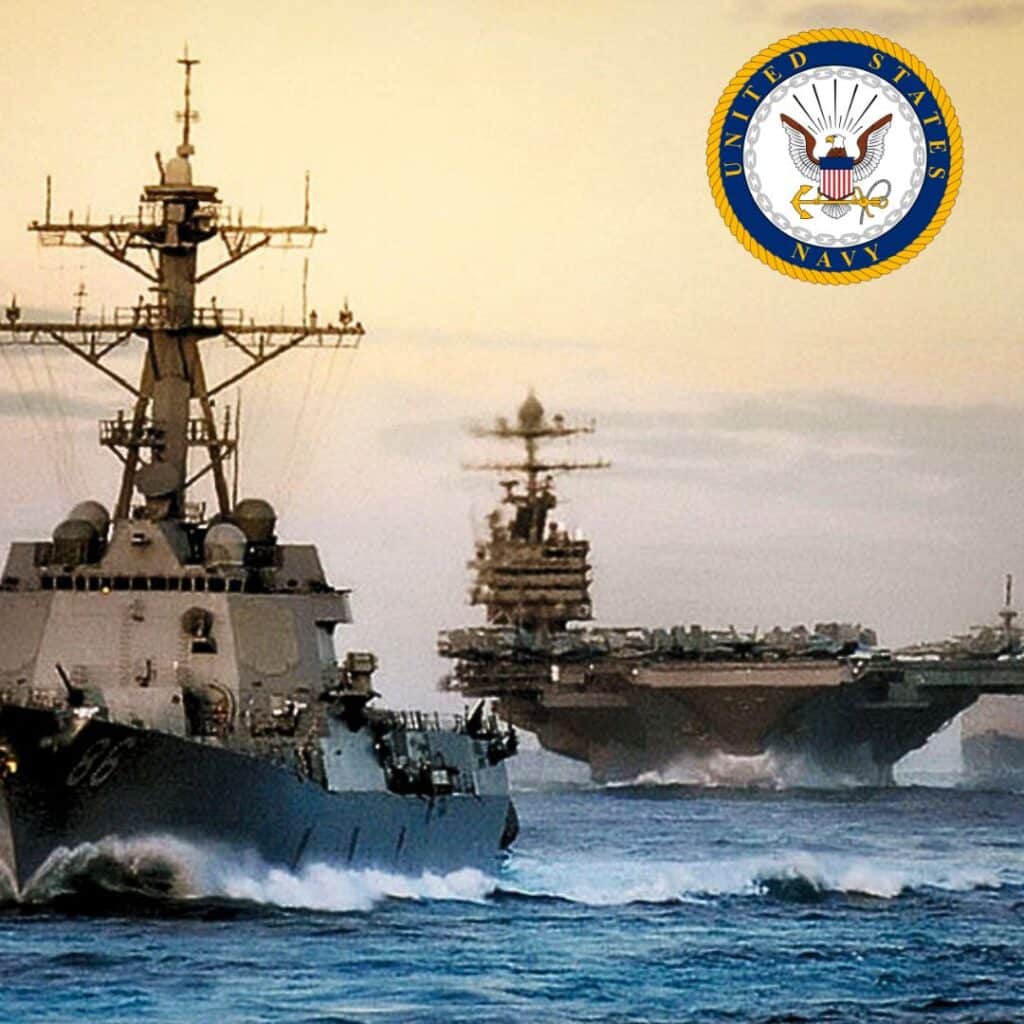
Today, the U.S. Navy commands the most powerful fleet the world has ever known. Aircraft carriers serve as floating cities of strength, nuclear submarines patrol silently beneath the waves, and advanced destroyers strike with precision across the globe. Together, they form an unmatched shield of deterrence, ensuring that America and its allies remain safe in an unpredictable world.
But the Navy’s mission extends far beyond combat. Sailors deliver humanitarian aid after hurricanes, earthquakes, and tsunamis. They bring food, medical care, and hope to those in desperate need. From rescuing stranded civilians to providing disaster relief in distant lands, the Navy embodies service in its fullest sense. Each ship deployed and each mission undertaken reflects the Navy’s values of honor, courage, and commitment. It is a constant reminder that the Navy protects freedom not just through strength, but also through compassion and resolve.
250 Years of Naval Bravery and Beyond
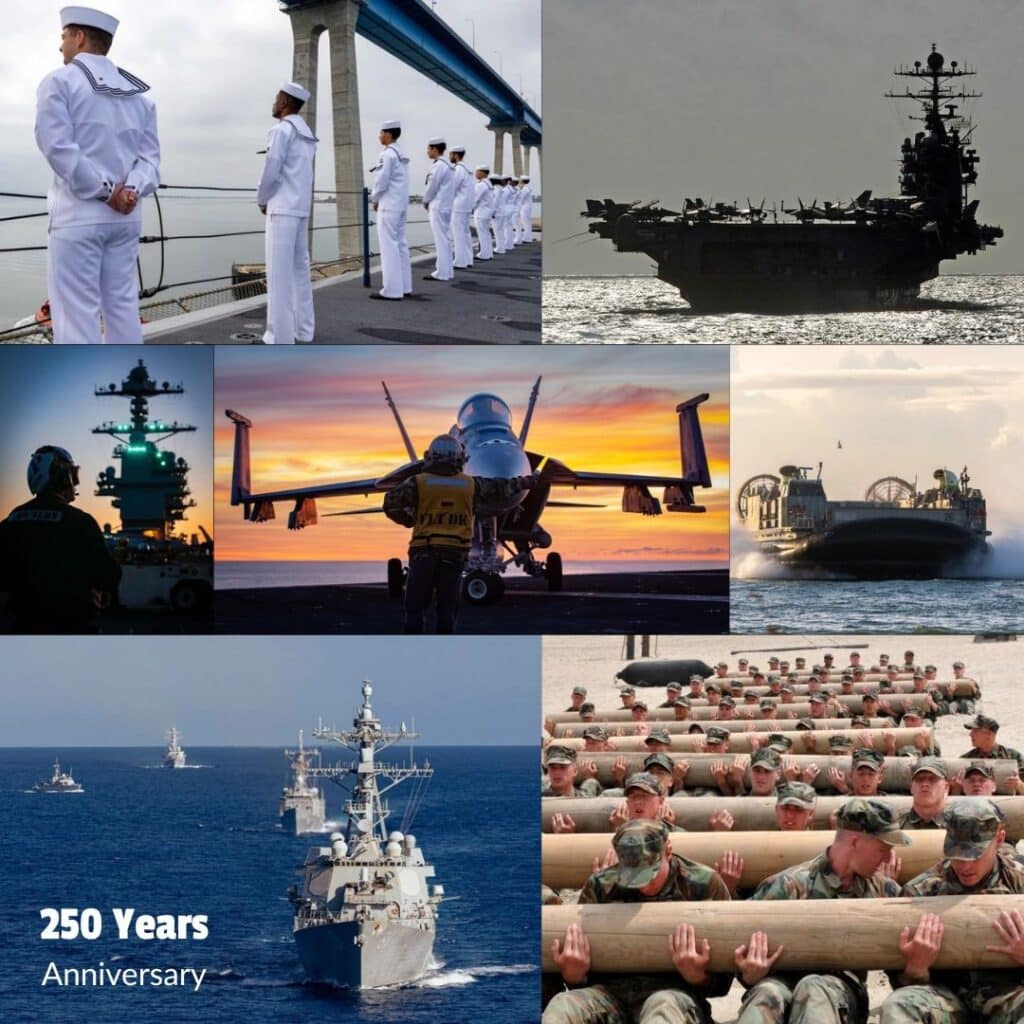
From wooden ships to warships, from small beginnings to global dominance, the Navy’s journey is one of courage and sacrifice. Every generation of sailors has added a new chapter to this incredible story—facing storms, battles, and tragedies, but always emerging stronger.
As we honor 250 years of naval history, we remember those lost at Pearl Harbor and in the Pacific. We also honor sailors who braved the icy seas of the Cold War and those serving today on distant waters. Their sacrifice is the price of freedom.
The U.S. Navy has come far from its humble beginnings, but its mission remains unchanged. To protect the nation, to defend liberty, and to ensure that freedom sails forward into the next 250 years.
Happy 250th Birthday, United States Navy. From wooden ships to warships, your bravery continues to sail on.
About The Author

Mike Isaac-Jimenez is a 25-year U.S. Air Force Veteran based in San Antonio, TX. He currently serves as a Marketing and Communications Veteran intern with Soldiers’ Angels, where he shares his passion for storytelling with his dedication to honoring military service. Mike holds a B.S. in Technical Management (Project Management) from Embry-Riddle Aeronautical University, along with A.A.S. degrees in Mechanical & Electrical Technology and Mechanical Engineering. He writes to preserve the legacies of America’s heroes and honor those who served and are still serving.
